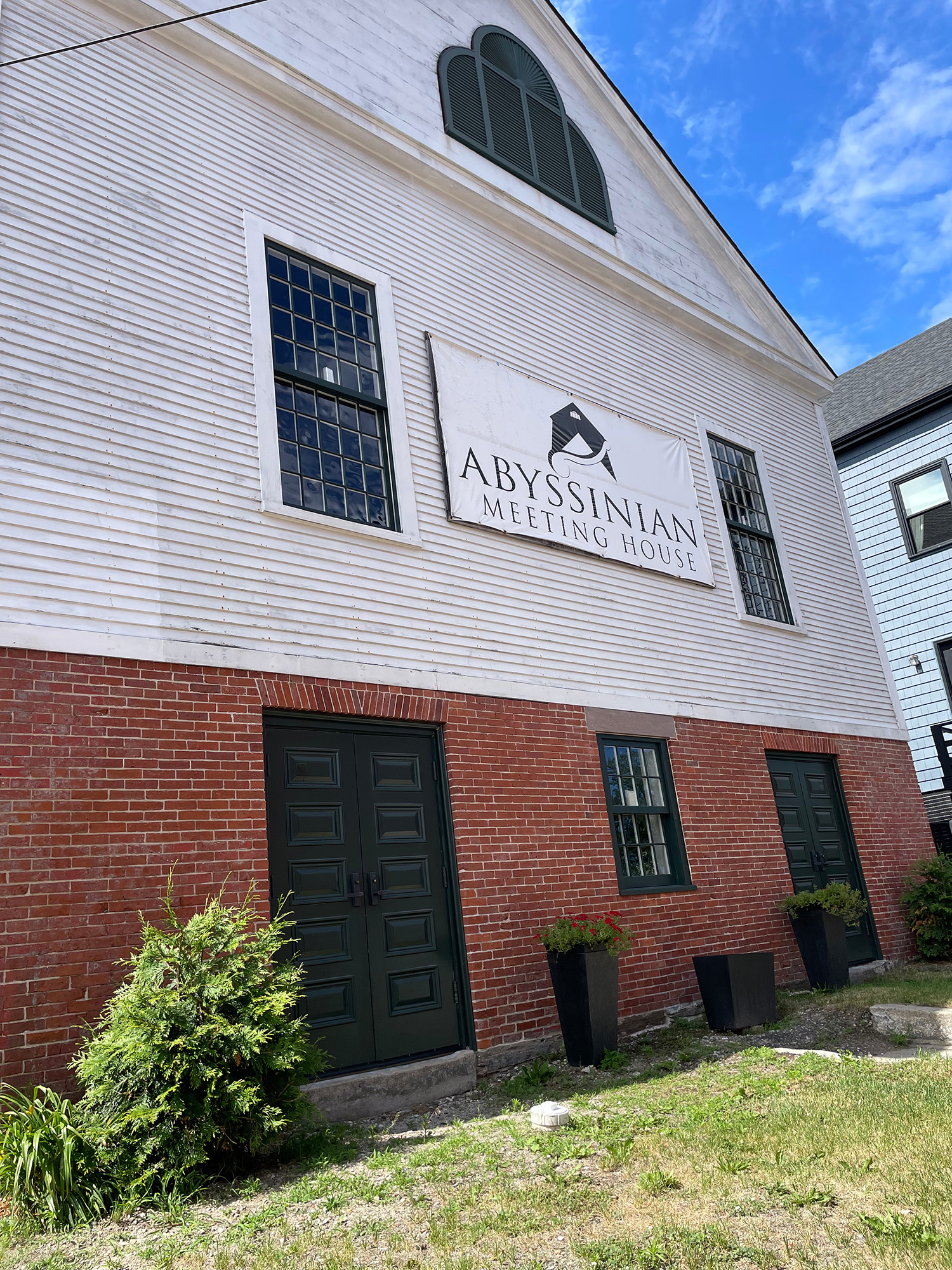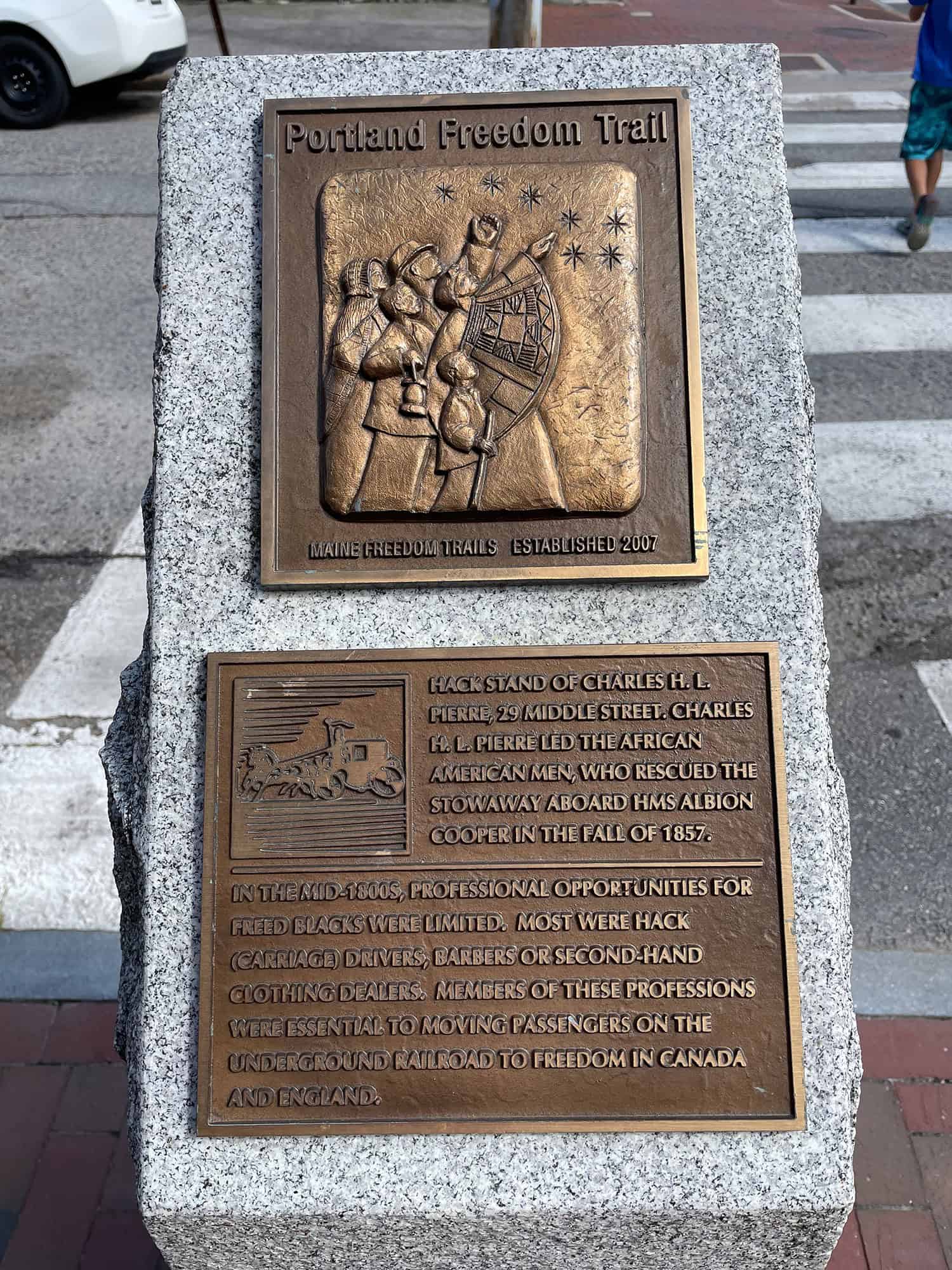Maine’s Black History and Heritage
By Bob Greene, Historian and Journalist
For a state known as being one of the whitest in the nation, Maine has a long and surprising deep Black history.
The first Black person we know by name to be in what is now Maine was Mathieu da Costa, who served as an interpreter with a group of French explorers on St. Croix Island near Red Beach – just south of Calais – in 1608. That’s twelve years before the Pilgrims arrived in what is now Massachusetts.
Since then, Africans and their descendants have sailed, fished, farmed, cut lumber and filled every other occupation you can think of in this northeastern edge of the United States that, surprisingly, is the closest point in the United States to Africa. And they left “footprints” that you can see today.
Historic Sites
Portland
Eastern Cemetery
(Congress & Mountfort Streets) is Portland’s oldest public burial ground, opening in 1668. African Americans were buried in “Colored Ground,” located in the back of the cemetery. But what was the back then is now located along Congress St., Portland’s main thoroughfare. A stone column on the sidewalk indicates it’s part of the city’s Freedom Trail. The black stone closest to the column is the grave of Jennett Ruby, the first wife of Reuben Ruby, Maine’s foremost Black abolitionist.
Portland Freedom Trail site.
Abyssinian Meeting House
(73 Newbury St.) is the nation’s third-oldest African American meeting house still standing. Built in 1828, it has served as a church, a segregated public school, as well as a hall for advocates for the abolition of slavery in the United States and various concerts. The building is the only Underground Railroad site in Maine recognized by the National Park Service and was listed on the National Register of Historic Places in 2006. It is currently being renovated and will be used for community purposes. Portland Freedom Trail site.
Green Memorial A.M.E. Zion Church
(46 Sheridan St.) was built in 1914 and is currently the oldest African American congregation in Maine. The building was listed on the National Register of Historic Places in 1973.
Cathedral of Immaculate Conception
(307 Congress St.). When it was built in 1866, Portland city fathers refused to allow a Catholic church to be on the city’s major street, Congress. Thus, it faces Cumberland Ave. and originally had a Cumberland Ave. address. The cathedral also was where James Augustine Healy became the first African American to serve as a Catholic bishop, serving from 1875 until his death in 1900. The cathedral is on the National Register of Historic Places.
Old Orchard Beach
The Homestead
(110 Portland Ave.) was “home” to more than 3,000 Black Americans who signed the guest register from 1923 to 1993, including many of the nation’s top musicians. Described as the Cummings guest house and owned by Rose Emerson Cummings, The Homestead’s guests included Duke Ellington, Cab Calloway, Count Basie, Ella Fitzgerald, Lionel Hampton, Harry Carney, Countee Cullen, John Hope Franklin and W.E.B. Dubois. The Homestead was placed on the National Register of Historic Places list in 2004.
E.E. Cummings Boulevard is named for one of Rose Cummings’ seven children, Edward Emerson (E.E.) Cummings (1914-2000), who became a prominent educator and town council member. E.E. Cummings Blvd. runs by the police station and high school where he created a mathematics curriculum that was unmatched in Maine’s schools at that time.
Brunswick
Harriet Beecher Stowe House
(63 Federal St.). While living in Brunswick, the author wrote Uncle Tom’s Cabin and sheltered John Andrew Jackson, a runaway enslaved person from South Carolina. The building is currently owned by Bowdoin College and is a National Historic Landmark and a National Underground Railroad Network to Freedom site.
Bath
Robert Benjamin Lewis house
(33 Lincoln St.) was the home of the inventor, author and entrepreneur. He wrote Light and Truth, the first book on world history from African American viewpoint; invented the hair picker to caulk seams of wooden ships, holding three United States patents, and successfully marketed hair oil and other commodities. Born in Pittston (now Gardiner), Maine, Lewis died in Haiti.
Brewer
“North to Freedom” statue
(12 State St.) represents all who made the dangerous journeys along the Underground Railroad. Located in Chamberlain Freedom Park at sidewalk level, the statue of an unknown enslaved person lifts himself, leaning North while looking South, from an underground railroad tunnel that was uncovered during construction in 1995. Parking is allowed at the gas station adjacent to the park.
Fryeburg
Limbo tombstone
(behind Fryeburg Public Library) marks the grave of an enslaved person who is considered to be one of the three men who founded the town of Fryeburg. The three spent the winter of 1762 tending cattle they had driven up from Gorham, Maine. His tombstone reads: “Limbo, a Native of Africa lies here. He was, while living, an honest man, the noblest work of God.”
Maine’s Black Heritage Experiences & Resources
The Portland Freedom Trail is a self-guided walking tour of Portland. Its 2-mile (3.2 km) route passes through the city’s oldest and most historic areas and includes many of the sites listed above. Portland by Foot offers an in-depth guided tour.
Indigo Arts Alliance, based in Portland, is an artist residency program cultivating the artistic development of Black and Brown descent. There are year-round public events including the annual Beautiful Blackbird Children’s Book Festival honoring the life and work of Maine artist, Ashley Bryan.
Maine Historical Society (MHS), located on Congress Street in downtown Portland, has had numerous exhibits that tell some of the stories of Maine Black History like Black Fashion History in Maine. Portland Freedom Trail tours can be booked through MHS.
Atlantic Black Box is dedicated to expanding the field of historical recovery in New England. ABB hosts events throughout the year including community walks across Maine.
Malaga Island, Phippsburg was once home to a mixed-race fishing community forcibly removed by the state in 1912. Now a public preserve managed by the Maine Coast Heritage Trust (MCHT) and an important Maine historical site. To learn more, MCHT’s website includes a video of the story of Malaga Island. There are guided kayak tours offered by Seaspray Kayaking.
Children’s Museum & Theatre of Maine includes Beautiful Blackbird permanent exhibit featuring the work of Ashley Bryan, makerspace art studio and more.
Black Owned Maine is an online network of Black-owned businesses in Maine.
Maine Black Chamber of Commerce serves as an advocate for the advancement and prosperity of Black-owned businesses in Maine.
Black Travel Maine exposes Black and multiethnic travelers and organizations to Maine by offering custom curated cultural tours.


